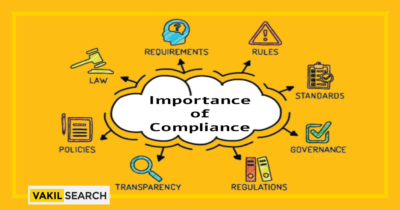This article will cover the nature and eligibility of the public limited company along with the Compliances needed by a Public Limited Company.
A Public Limited Company establishment in India is the best business form for business people considering large-scale commercial operations. A minimum of seven members are needed to establish a Public Limited Company in India, and there is no limit to the maximum number of participants for establishing a Public Limited Company.
A Public Limited Company in India has all of the benefits of a corporate entity and the qualities of Limited Liability. A public limited corporation is listed on the stock exchange to raise finance from the general public. As a result, Public Limited Companies must comply with numerous government requirements to establish a Public Limited Company.
Advantages of PLCs
A Public Limited Company registered following the provisions of the Companies Act, 2013. A member of an Indian Limited Company gets the benefits of Limited Liability. This type of company is also permitted to obtain funds from the public through the issuance of shares. Here are the other benefits of Public Limited Companies:
- Directional Insight
To be a public company is an approach to partial ownership, an approach that, depending on the scale of your brand, can reach hundreds or even thousands of individuals. This provides these professionals with a direct line of communication with your company, allowing them to extract ideas and experience that will assist the company in evolving in ways that an LTD cannot.
- Limited Personal Liabilities
The more people affiliated with a brand, the less the impact of legal implications on an individual’s shoulders if there are any legal conflicts.
PLCs also allow for the quick transfer of shares and assets, making exiting the company far simpler than private limited companies.
- Raise Funds from Public Buyers
The most common reason for any company to consider becoming a public limited company is to generate capital via stock sales. Stock sales give the general public a stake in the company in exchange for financial investment. The sale of shares is undoubtedly the most sought-after method of raising funds for personal wealth and business expansion.
- Boost Reputation and Prestige
Public sector companies are the largest and most successful. Apple, Microsoft, and Facebook are all publicly traded companies. Being in the public eye, selling assets, and entering the stock market provide brand prestige that can improve your reputation and investor perception and even raise the value.
Qualification Criteria for Annual compliances needed by a Public Limited Company
When a business is registered as a Public Limited Company, it is required by law to complete the yearly compliance for a public limited company under the Companies Act 2013. The only requirement here is that it be a public limited business.
Compliances needed by a Public Limited Company
- Compliance with Annual Returns
Form MGT 7 should be used to file the company’s Annual Return. It also offers information about the directors and stockholders for the fiscal year.
The Annual Return is due within 60 days of the Annual General Meeting.
The Annual Return includes financial statements, a shareholding structure, a compliance certificate, and information from several registers.
- Accounting bookkeeping and financial statement preparation
Every public corporation is required to keep books of accounts each fiscal year.
Furthermore, the shareholders should approve the financial statement at the general meeting.
Filling out Form AOC-4 within the time frame specified. In addition to the Balance Sheet, Profit and Loss Account, Directors’ Report, Cash Flow Statement, Auditor’s Report, and Consolidated Financial Statement.
- Returns on Income
The corporation must file its income tax return by September 30th.
Form MR-3 Secretarial Audit Report
- Fill out Form MGT-14 for Financial Adoption and Director’s Report.
A company must file MGT-14 with the Registrar of Companies (RoC) in line with sections 94(1) and 117(1) of the Companies Act 2013 and the rules promulgated thereunder.
- Annual compliance with all SEBI-related rules and regulations
- Regulation 24A
Secretarial Audit under Regulation 24A for listed corporations and their substantial subsidiaries Within 60 days of the end of the fiscal year.
- 43A Regulation
The top 1000 listed firms (by market capitalization) must develop a dividend distribution policy. Declare on the website, and include a web link in the yearly report.
- SEBI LCB Circular
Thirty days following the end of the fiscal year, SEBI LCB Circular Initial Disclosure of being categorized as a major corporate borrower.
- SEBI LCB Circular
SEBI LCB Circular on Large Corporate Borrowers’ Incremental Borrowings Disclosure Within 45 days following the end of the fiscal year.
- 44th Regulation
Voting results must be submitted within 48 hours of the conclusion of General Meetings.
- 34th Regulation
Provide a copy of the annual report that was distributed to shareholders and the notification of the annual general meeting. The submission will be submitted to the stock market and published on the website. If any modifications are made to the annual report, a corrected copy needs to be sent with the details and reasons for the changes. For annual reports, the deadline is the day that distribution to shareholders begins.
- Other Required Compliances:
- Annual general meetings must be held yearly to approve the financial statements.
- Board meetings four times a year.
- Registering Director’s Report once a year.
- Fill out form MGT-15 to provide an exclusive report on the company’s Annual General Meeting (AGM).
Drawbacks of Public Limited Company
- Lack of confidentiality
The company earns full public disclosure to maintain shareholder confidence and transparency, making secrecy impossible to maintain. The corporation cannot retain confidentiality since the public is involved in decision-making.
- Less adaptable than other business forms
Flexibility is usually a positive for any company, but a public corporation does not have this benefit. Every public corporation is subject to rules and regulations, which limits operational flexibility.
- Costly Business Form
The cost of establishing the company as a public company is too expensive. A substantial amount of money, effort, and steps must be taken to launch a public company. The profit of the company is decided by the investment you make.
Conclusion
The laws and guidelines of a Public Limited Company are much more severe and strict than those of a Private Limited Company. Still, creating a Public Limited Company is preferable because it offers the advantages of a Private Limited Company, such as easy share transferability and ownership.
Visit Vakilsearch and read more information on various legal topics.
Read More:










